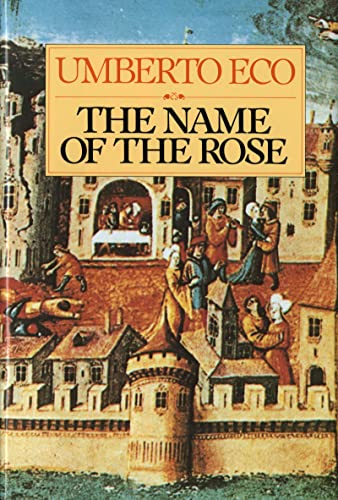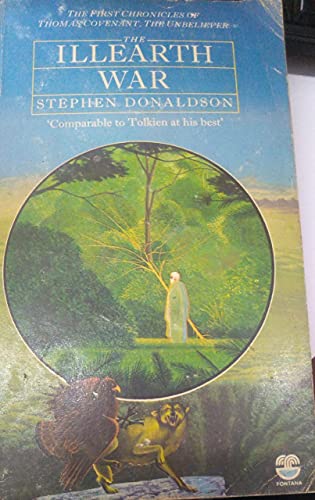The Name of the Rose – Summary
Set in the year 1327, “The Name of the Rose” follows Franciscan friar William of Baskerville and his young novice Adso of Melk as they arrive at a wealthy Benedictine abbey in Northern Italy. Their visit coincides with a theological debate between Franciscans and papal emissaries, but they soon find themselves embroiled in a series of mysterious deaths.
The first victim is Adelmo of Otranto, found dead at the base of the abbey’s walls. As William and Adso investigate, they discover a labyrinthine library guarding ancient secrets. The deaths continue with Venantius of Salvemec found in a vat of pig’s blood, and Berengar of Arundel going missing.
William and Adso’s investigation leads them to uncover the abbey’s dark underbelly, including forbidden sexual relationships and heretical beliefs. They learn of a secret room in the library called the finis Africae, which holds a mysterious book at the centre of the murders.
As the body count rises, including the herbalist Severinus, the investigation is complicated by the arrival of Bernard Gui, a ruthless inquisitor. Gui arrests several suspects, including Remigio of Varagine and Salvatore, on charges of heresy.
The mystery culminates in a confrontation with Jorge of Burgos, the blind librarian, who has been protecting Aristotle’s lost book on Comedy. Jorge believes the book’s contents, which celebrate laughter and challenge established doctrine, are too dangerous to be released. In a dramatic finale, Jorge destroys the book and sets fire to the library, which spreads to consume the entire abbey.
William and Adso escape, with the young novice bidding farewell to his master in Munich. Years later, an elderly Adso revisits the ruined abbey, collecting fragments of books to create his own “lesser library”.
The novel ends with Adso, now at the end of his life, reflecting on the meaning of the events he witnessed and leaving his manuscript – the text of the novel itself – for future readers to interpret.
Key themes:
- The conflict between reason and faith
- The power and danger of knowledge
- The complexity of truth and interpretation
- The role of laughter and humour in challenging authority
- The corruption within religious institutions
- The nature of signs and symbols in understanding reality
Character Details
William of Baskerville
William of Baskerville is the protagonist of the novel, a Franciscan friar renowned for his intellect and deductive skills. Modelled after Sherlock Holmes, William approaches the murders with rational analysis and empirical observation, often challenging the superstitious beliefs of his contemporaries. His quest for truth is driven by a deep curiosity and a belief in the power of reason, yet he remains aware of the limitations of human knowledge. William’s character embodies the emerging scientific thought of the late Middle Ages, while still grappling with his faith and the complexities of the world around him.
Adso of Melk
Adso of Melk serves as the narrator and Watson-like companion to William. A young Benedictine novice, Adso’s journey through the events of the novel is also a coming-of-age story. He struggles with his faith, experiences sexual awakening, and grapples with the moral ambiguities presented by the investigation. Adso’s narrative voice, looking back on events from old age, adds layers of reflection and interpretation to the story, highlighting themes of memory, meaning, and the passage of time.
Jorge of Burgos
Jorge of Burgos is the antagonist of the novel, a blind monk who serves as the guardian of the library’s forbidden knowledge. Intelligent and deeply conservative, Jorge represents dogmatic adherence to traditional religious doctrine. He fears the power of laughter and free thinking, believing they threaten the established order of the Church. Jorge’s actions drive the central conflict of the novel, as he goes to extreme lengths to protect what he sees as dangerous knowledge from being disseminated.
Ubertino of Casale
Ubertino of Casale is a radical Franciscan friar and former mentor to William. He represents the extremes of religious fervor, advocating for absolute poverty and apocalyptic visions. Ubertino’s presence in the novel highlights the internal conflicts within the Franciscan order and the broader Church, adding depth to the historical and theological backdrop of the story.
Bernard Gui
Bernard Gui is a Dominican friar and papal inquisitor who arrives at the abbey to participate in the theological debate. Based on a historical figure, Gui embodies the ruthless pursuit of heresy that characterized the Inquisition. His presence escalates the tension in the abbey and complicates William’s investigation, representing the oppressive power of religious authority.
Reader Fit
“The Name of the Rose” would appeal to readers who enjoy intellectual mysteries, historical fiction and philosophical explorations. It’s ideal for those interested in medieval history, religious debates and the interplay between faith and reason.
The novel’s complex narrative and rich symbolism make it a rewarding read for literary enthusiasts who appreciate multi-layered storytelling and intertextual references. However, its density and erudite style might be challenging for casual readers seeking a straightforward mystery novel.
CEFR Classification and Learning Suitability
Estimated CEFR Level: C2 (Proficiency)
The Name of the Rose is a complex historical mystery novel with advanced language and intricate themes, suitable for proficient learners.
- Vocabulary: The vocabulary is extensive and sophisticated, including specialised historical, religious and philosophical terminology.
- Grammar and Structure: Sentences are complex and often lengthy, with detailed descriptions and layered narrative styles.
- Themes: The novel explores themes of knowledge, faith, power and truth, presented with deep philosophical and historical reflections.
- Dialogue and Style: Dialogue is formal and nuanced, enhancing the novel’s intellectual and atmospheric tone.
Recommendation:
This book is ideal for proficient learners who seek a challenging literary work rich in historical and philosophical content.
Quick Facts
- Genre: Historical mystery, Philosophical fiction
- Publication Year: 1980 (original Italian), 1983 (English translation)
- Reading Time Estimate: 20-25 hours
- Notable Awards: Strega Prize (1981), Prix Médicis Étranger (1982)
Related Books
- “Foucault’s Pendulum” by Umberto Eco
- “The Pillars of the Earth” by Ken Follett
- “A Morbid Taste for Bones” by Ellis Peters
Buy the Book
Embark on a journey through medieval mysteries and philosophical puzzles with “The Name of the Rose”. This masterpiece of historical fiction will challenge your intellect and keep you guessing until the very end. Don’t miss out on this literary adventure – get your copy today and unravel the secrets of the abbey yourself!


